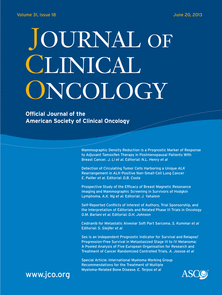
Ewing sarcoma treatment: assessment of cyclophosphamide and etoposide on survival rates

Ewing sarcoma treatment: assessment of cyclophosphamide and etoposide on survival rates
Results of the EICESS-92 Study: two randomized trials of Ewing's sarcoma treatment--cyclophosphamide compared with ifosfamide in standard-risk patients and assessment of benefit of etoposide added to standard treatment in high-risk patients-
J Clin Oncol. 2008 Sep 20;26(27):4385-93. doi: 10.1200/JCO.2008.16.5720Did you know you're eligible to earn 0.5 CME credits for reading this report? Click Here
Synopsis
647 patients with localized Ewing sarcoma were sorted into two risk groups based on the stage and tumour volume. Patients were allocated to the standard-risk (SR) group if their localized tumours were less than 100 mL in volume. Patients with localized tumours greater than 100 mL or with metastatic disease were allocated to the high-risk (HR) group. The 155 SR patients were then randomized to rece...
To view the full content, login to your account,
or start your 30-day FREE Trial today.
FREE TRIAL
LOGIN
Forgot Password?
Explore some of our unlocked ACE Reports below!

Learn about our AI Driven
High Impact Search Feature
Our AI driven High Impact metric calculates the impact an article will have by considering both the publishing journal and the content of the article itself. Built using the latest advances in natural language processing, OE High Impact predicts an article’s future number of citations better than impact factor alone.
Continue



 LOGIN
LOGIN

Join the Conversation
Please Login or Join to leave comments.